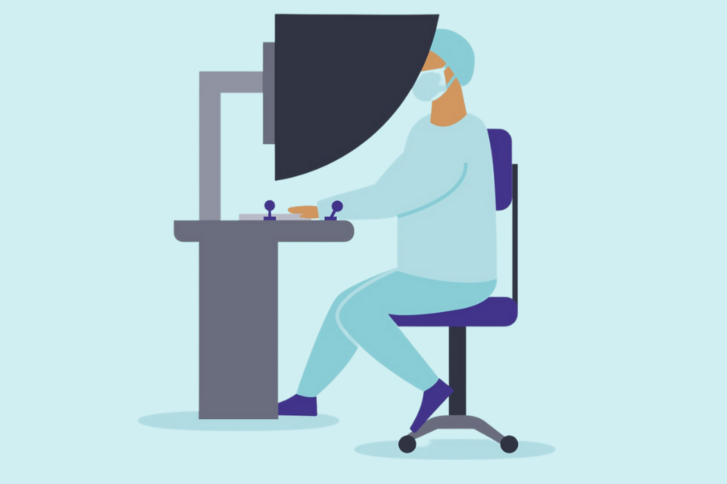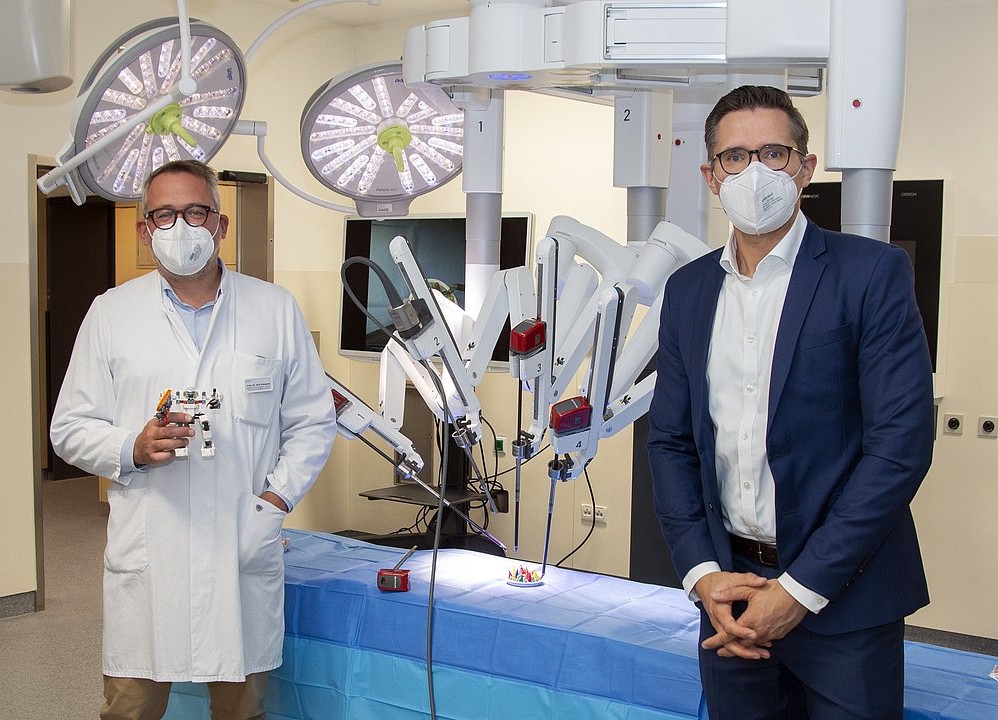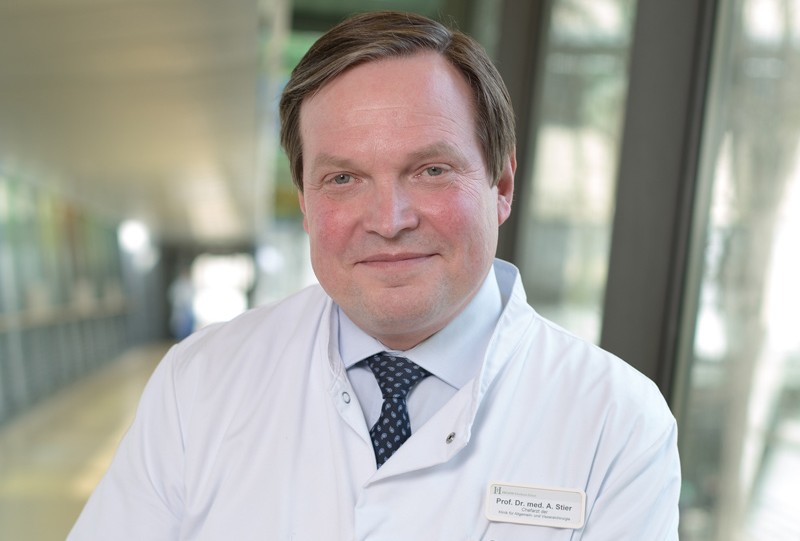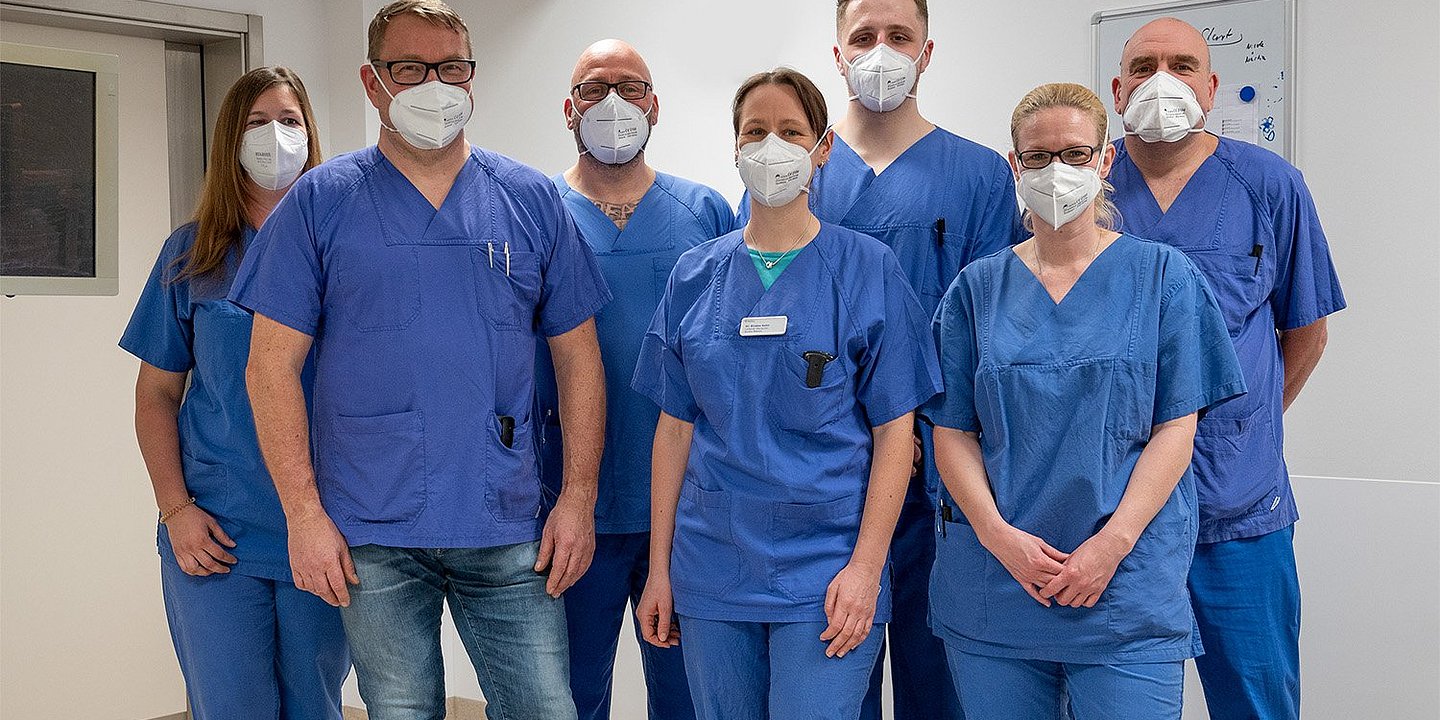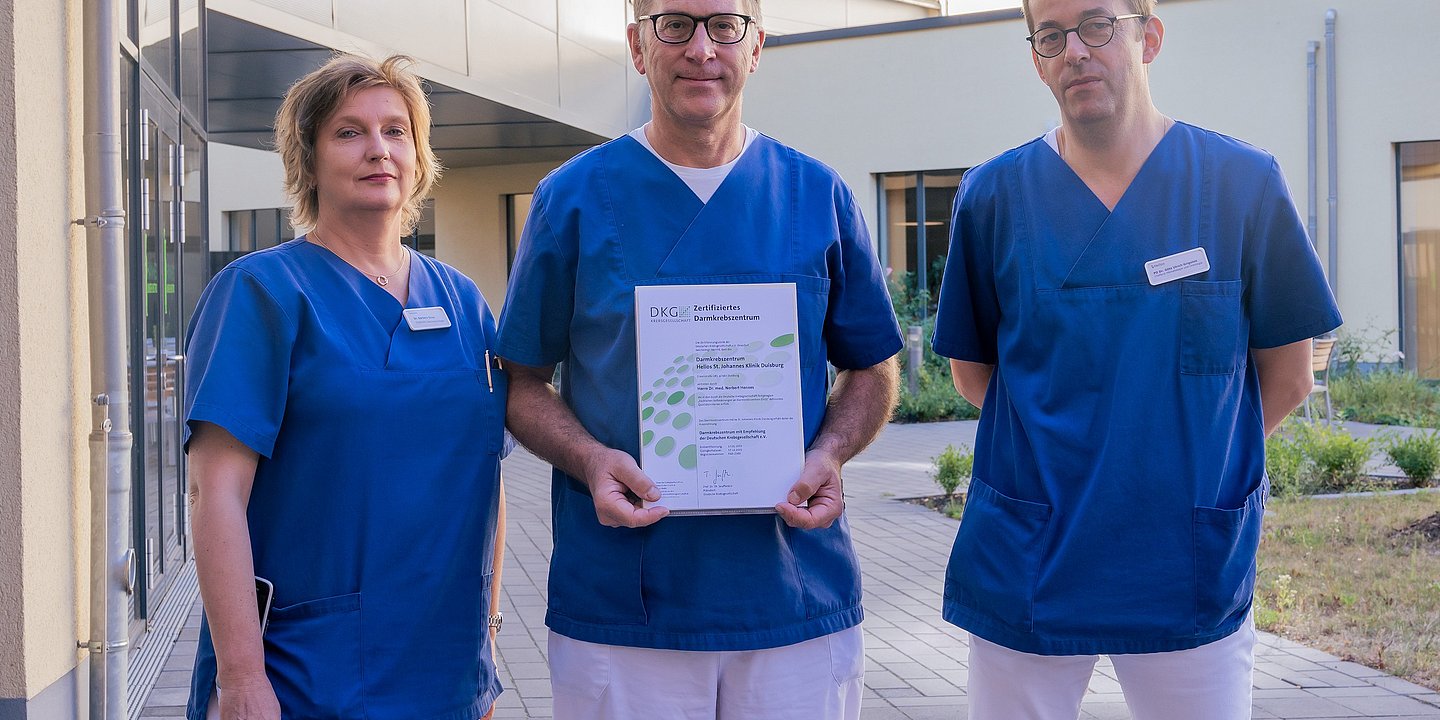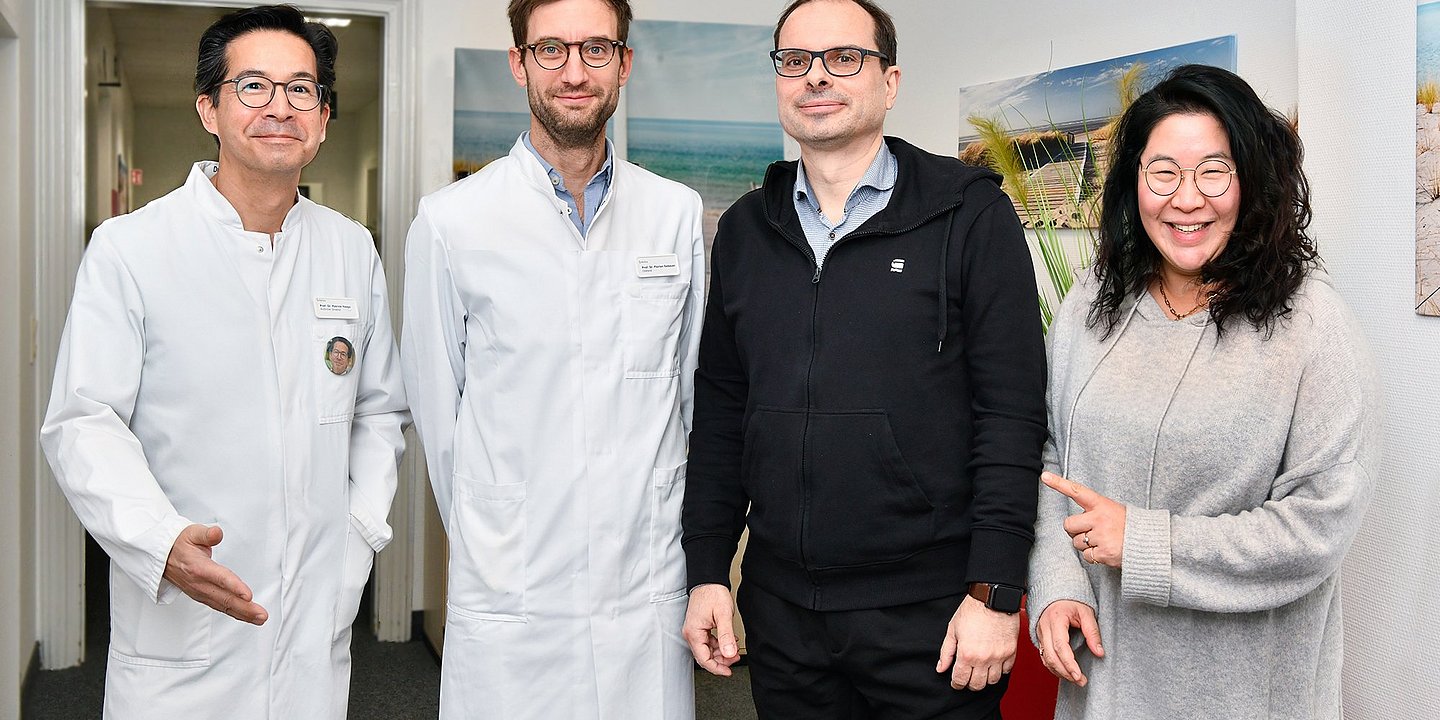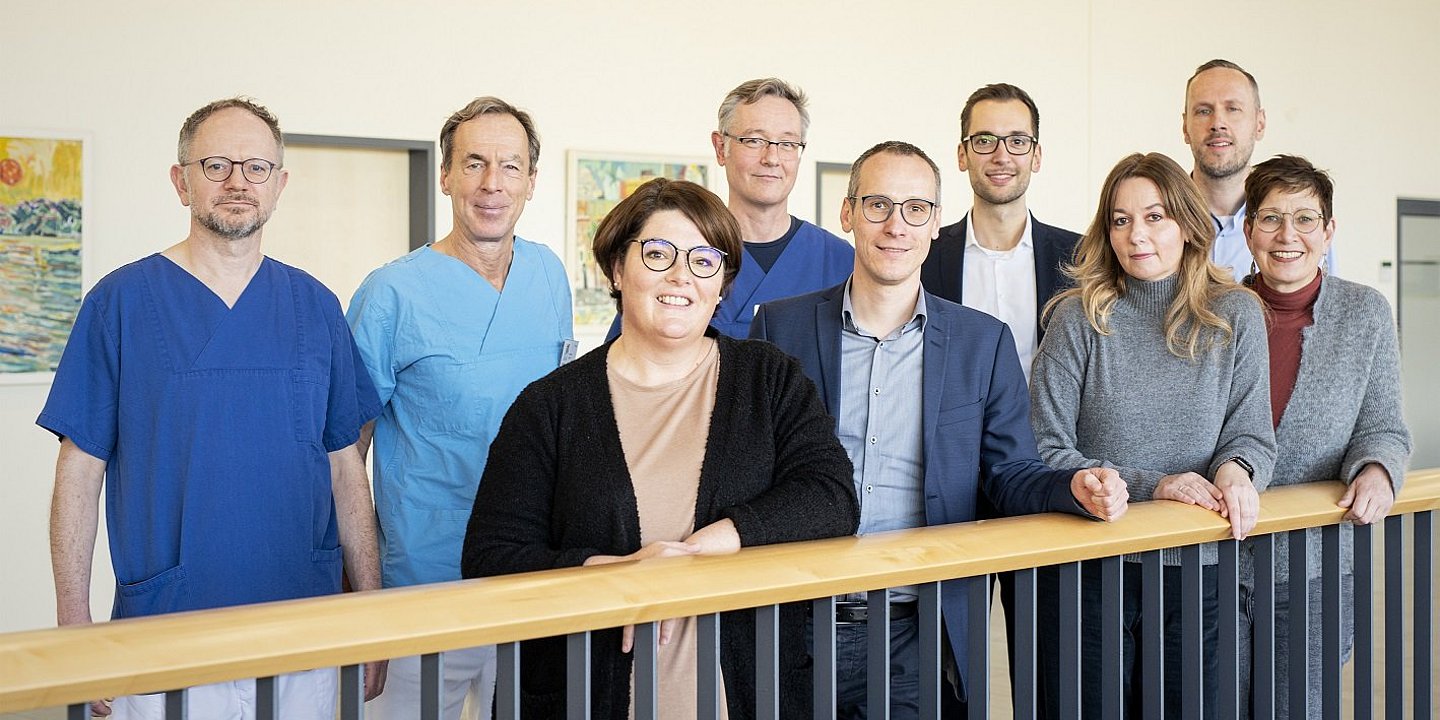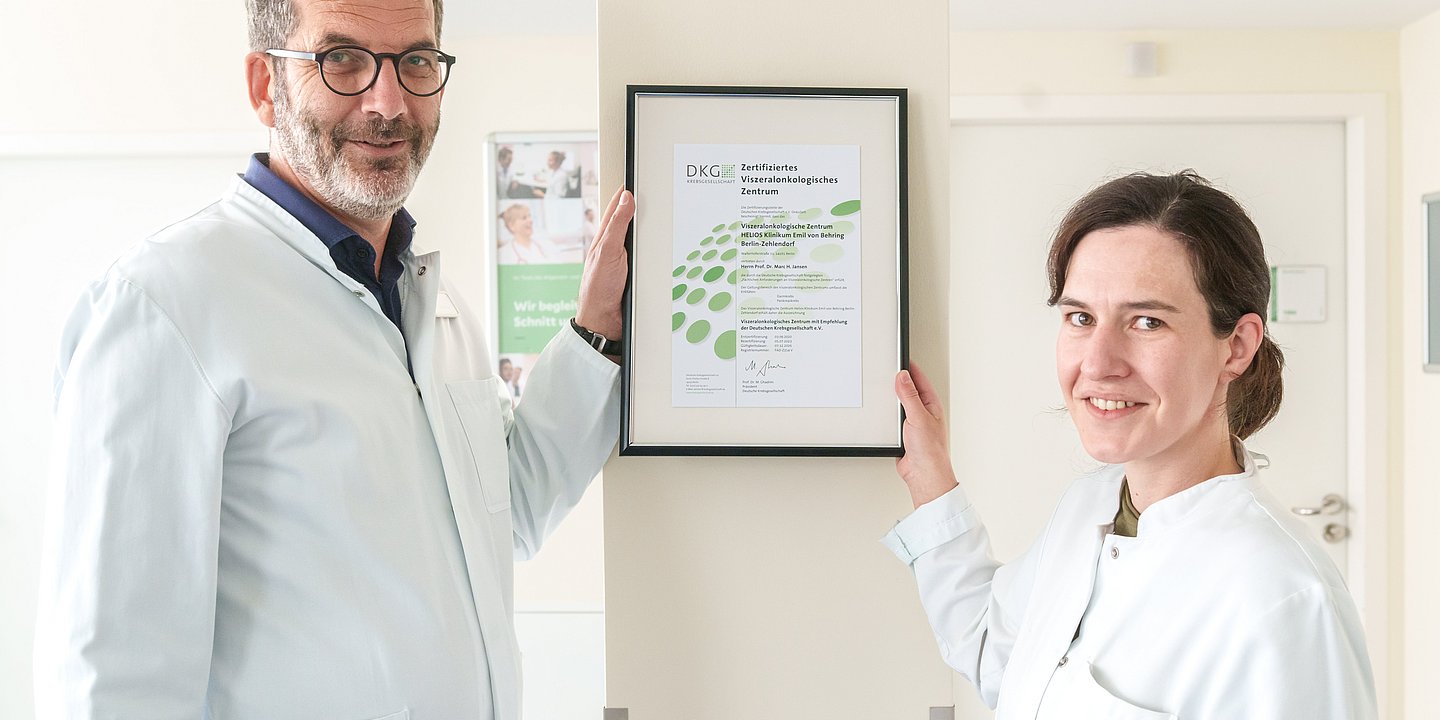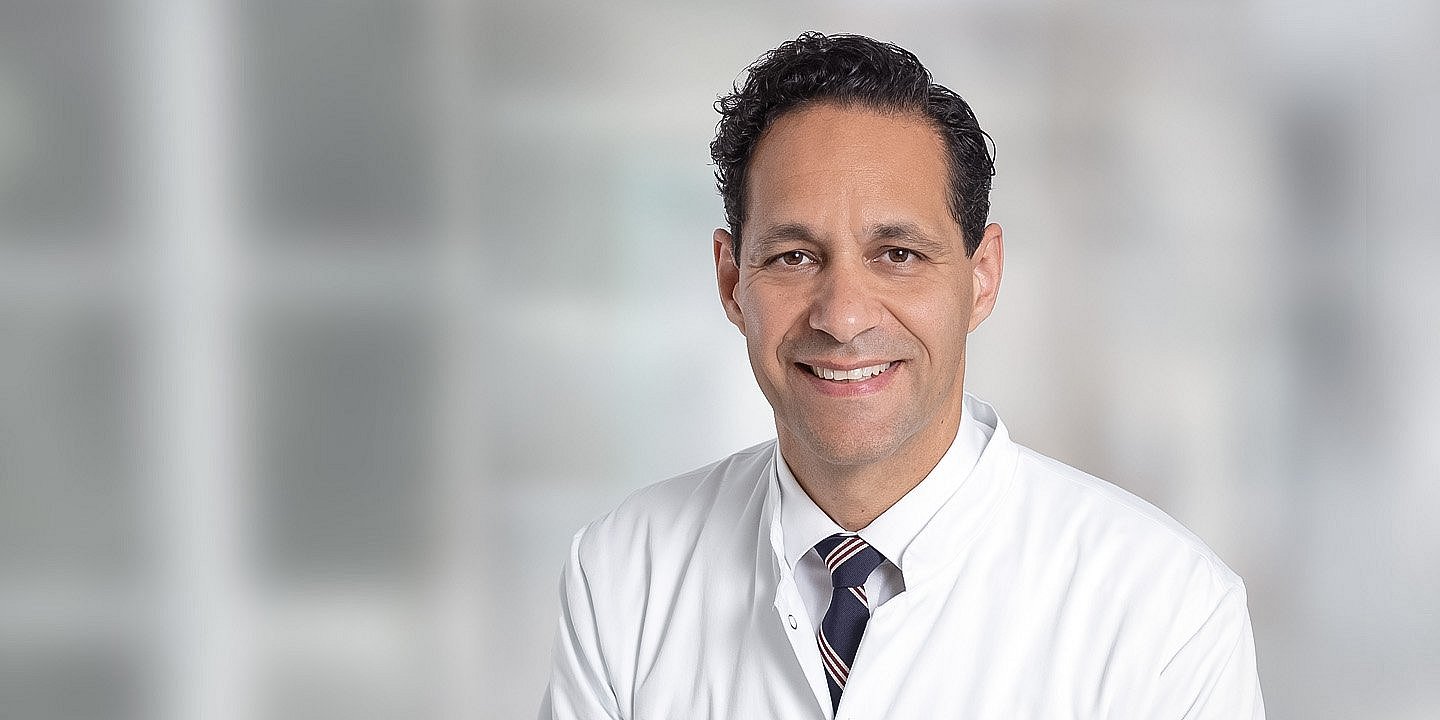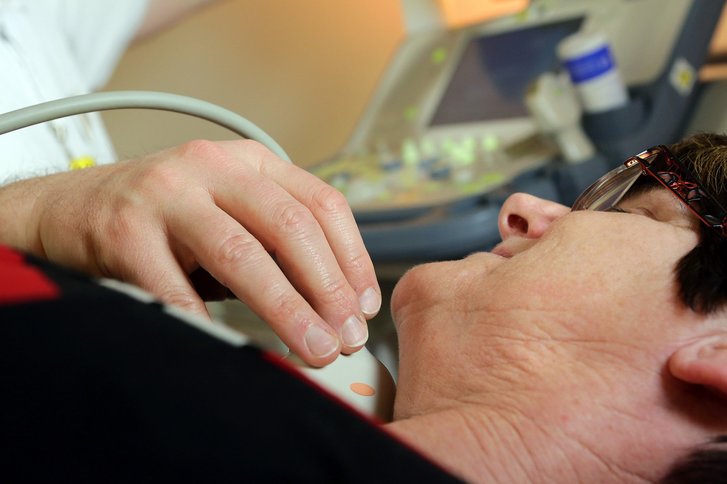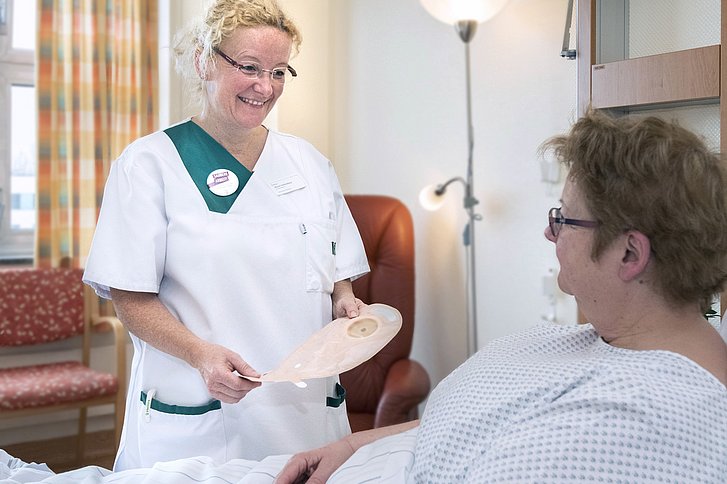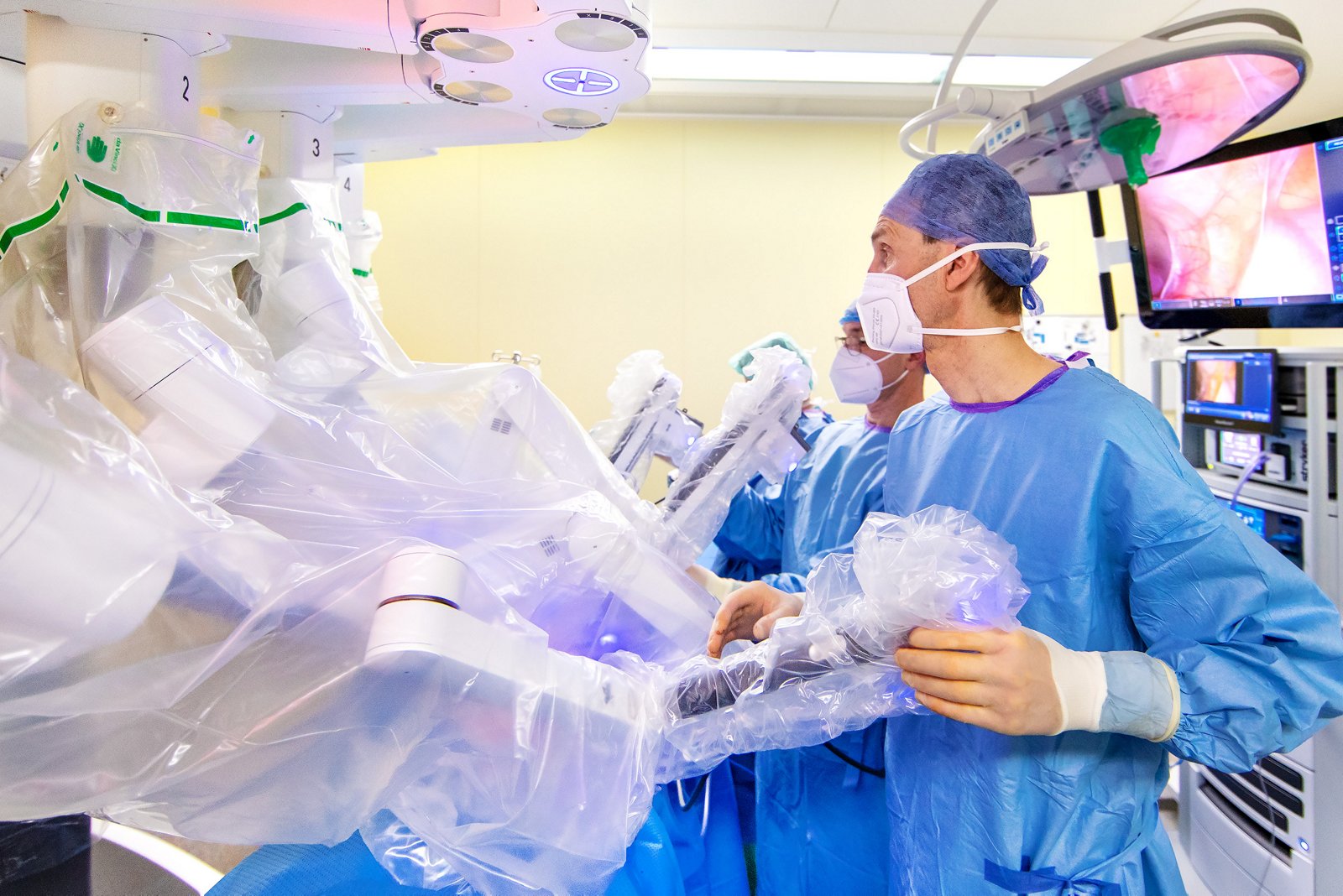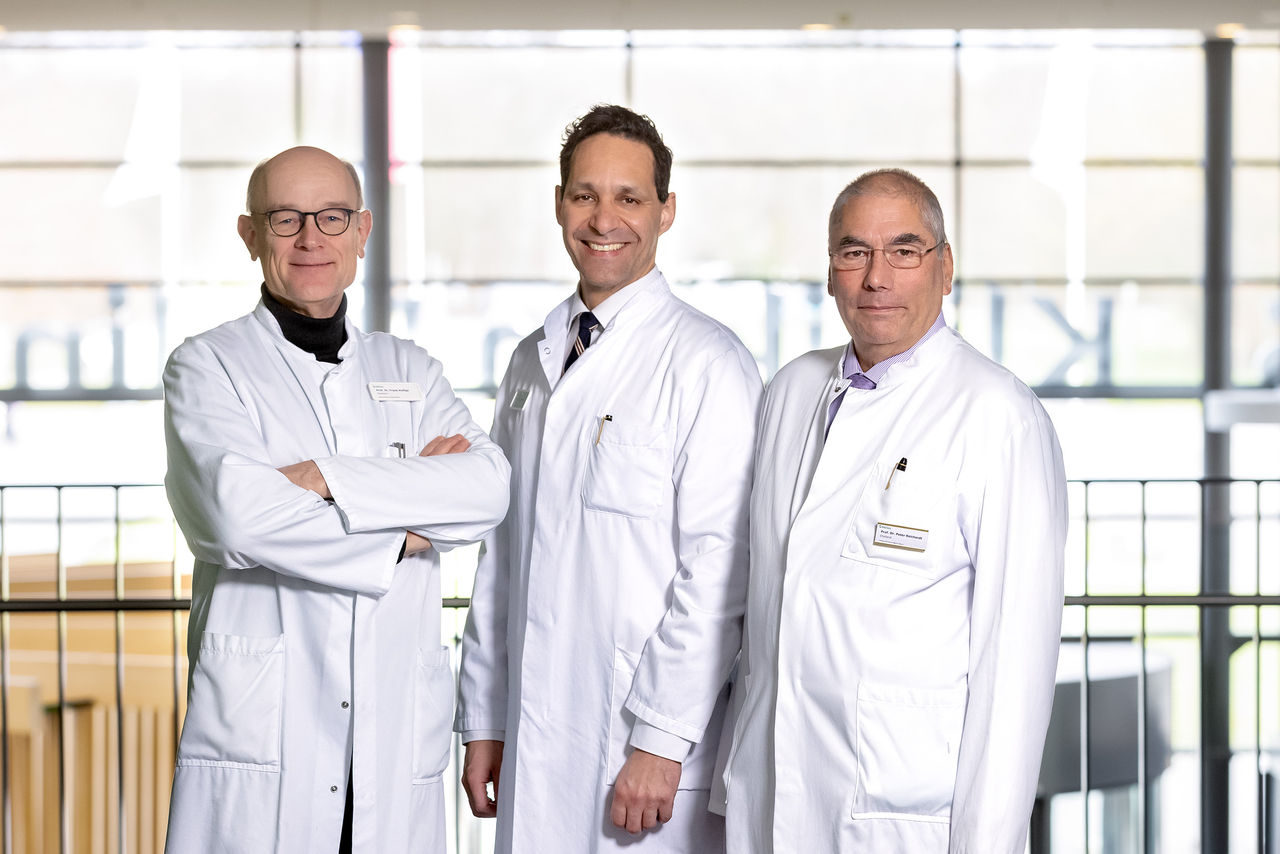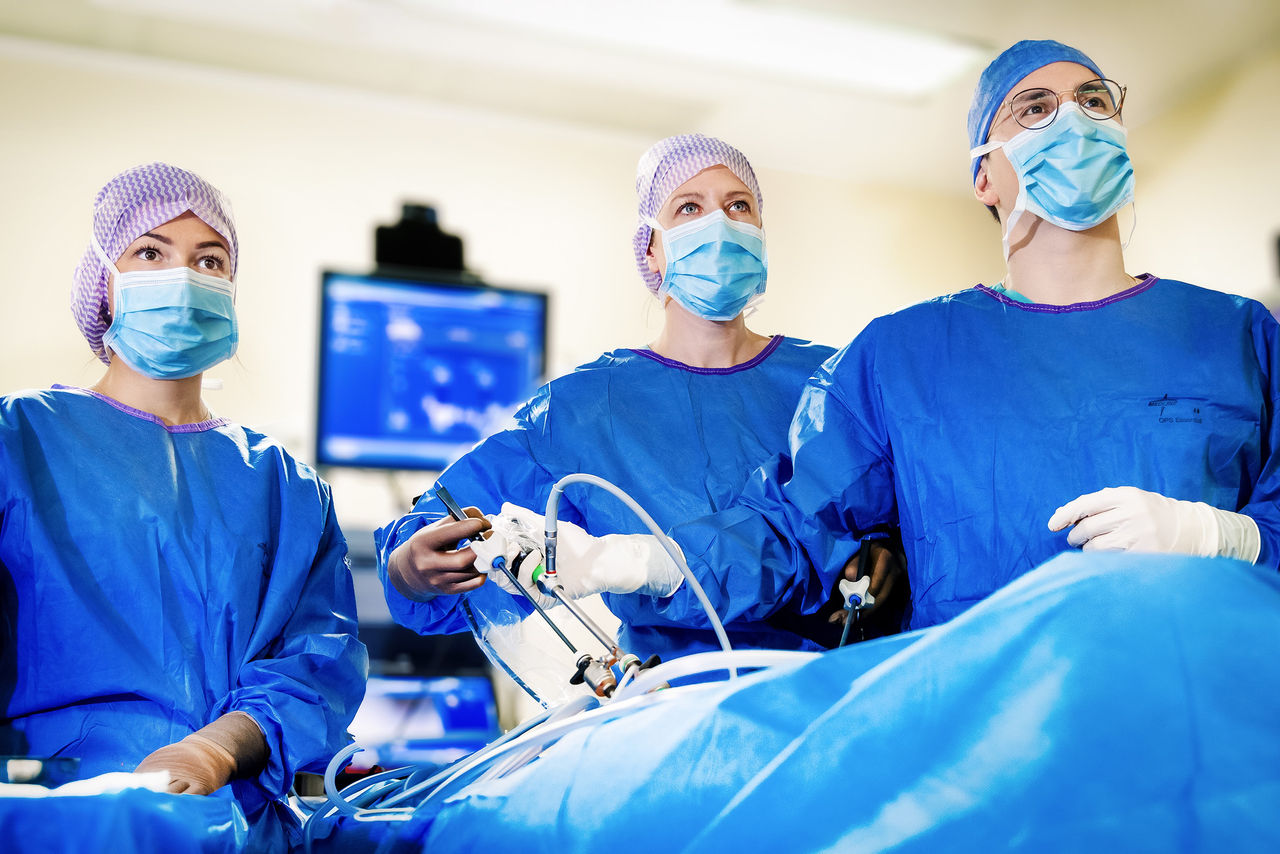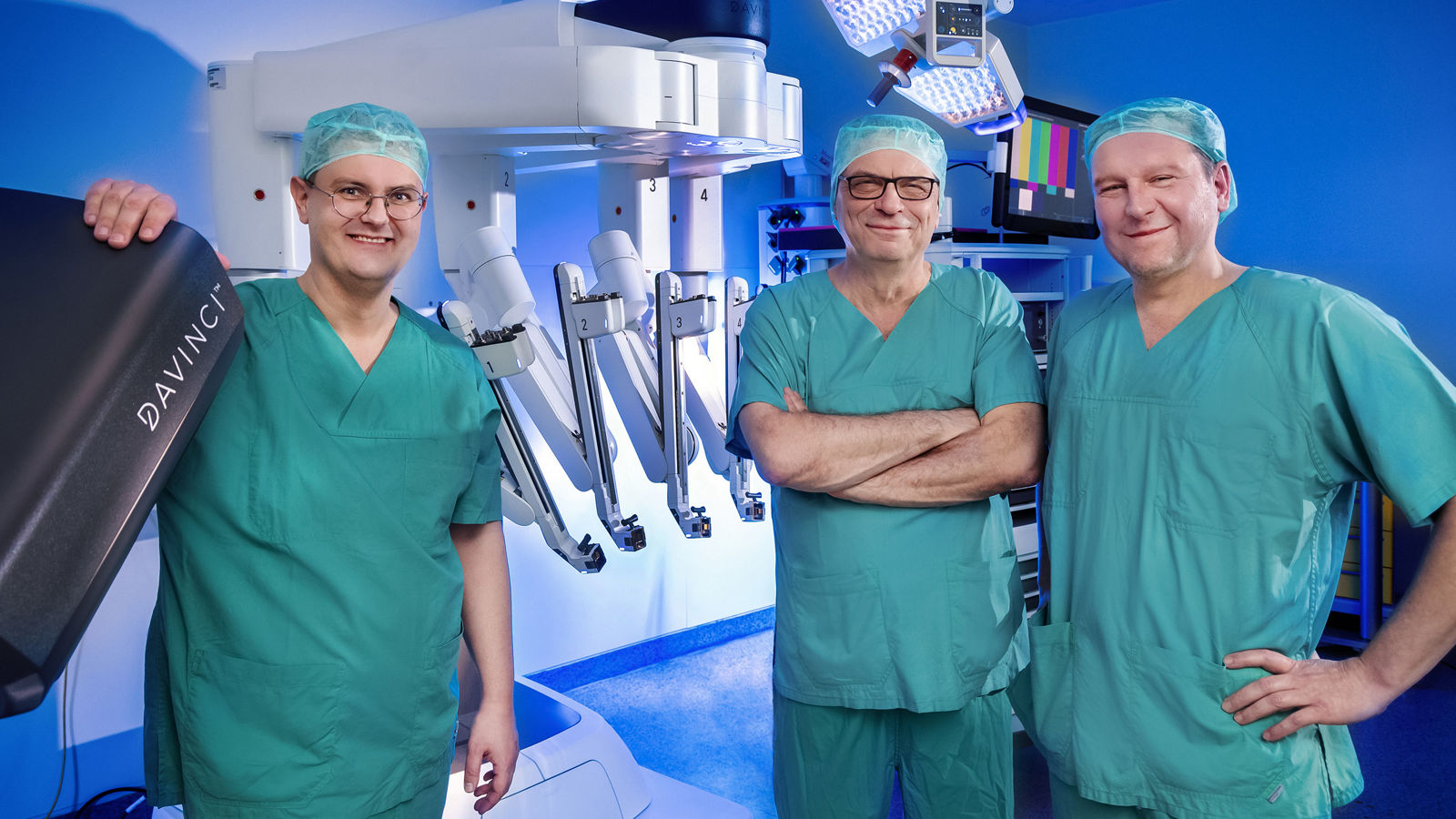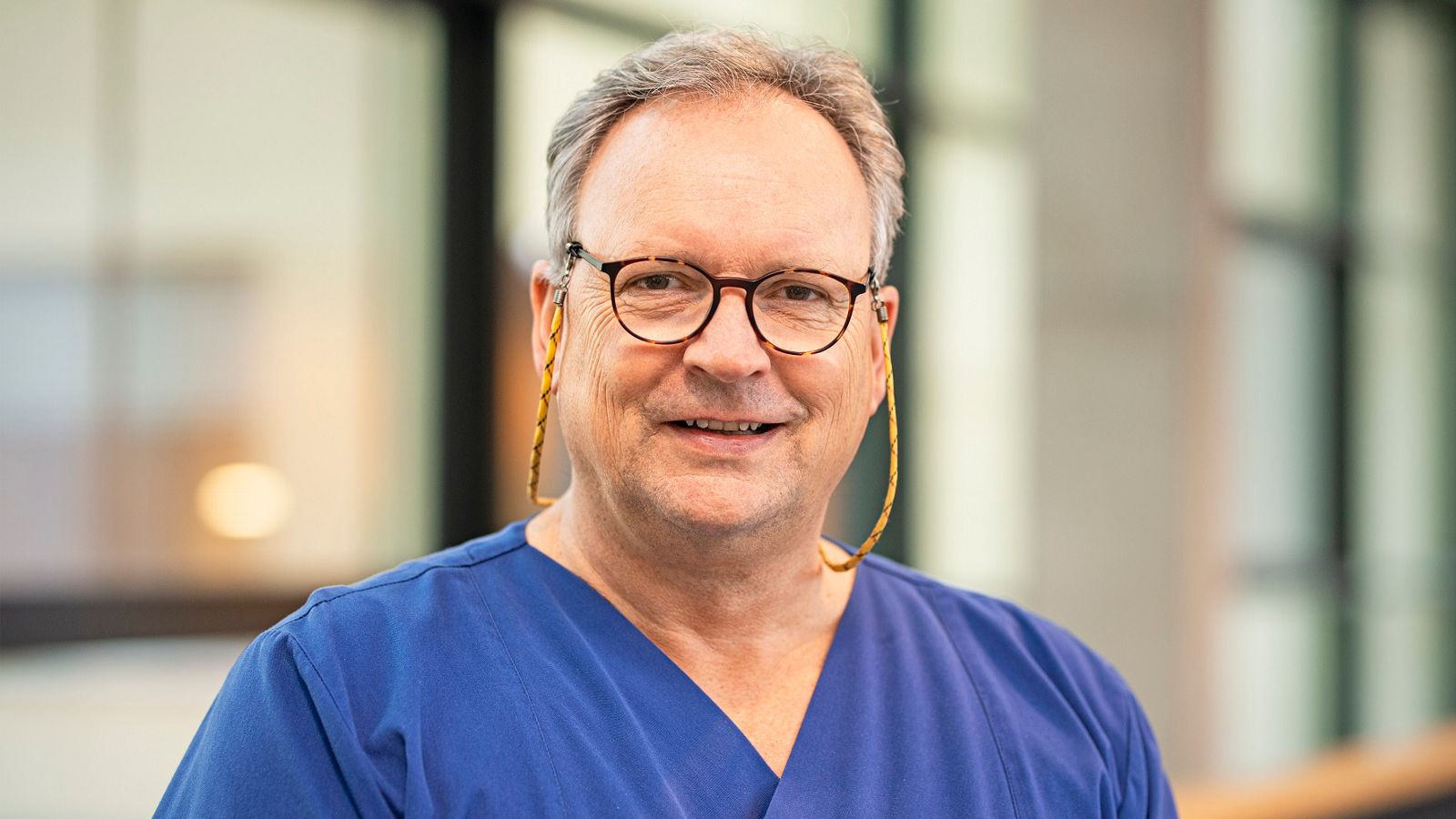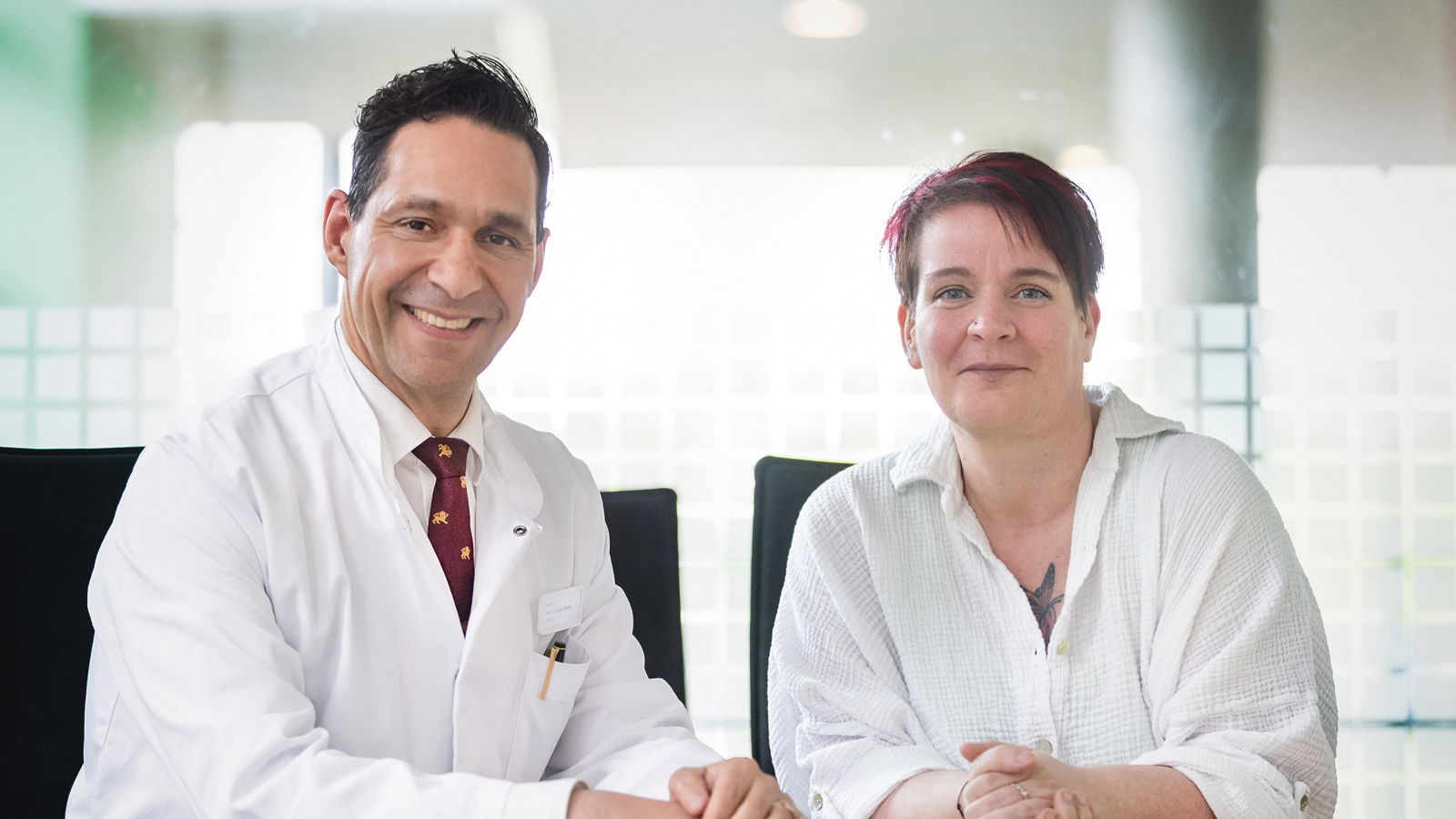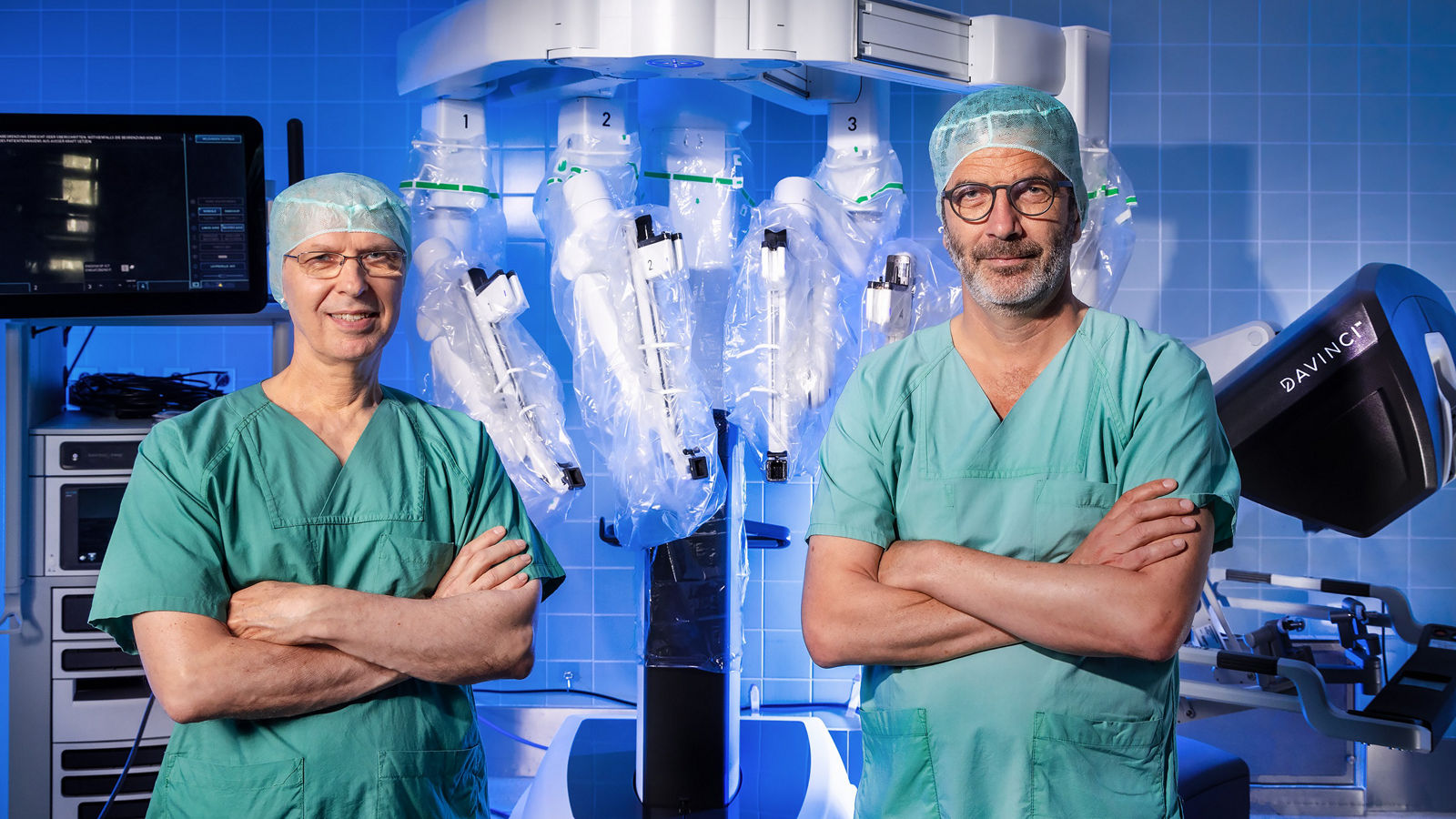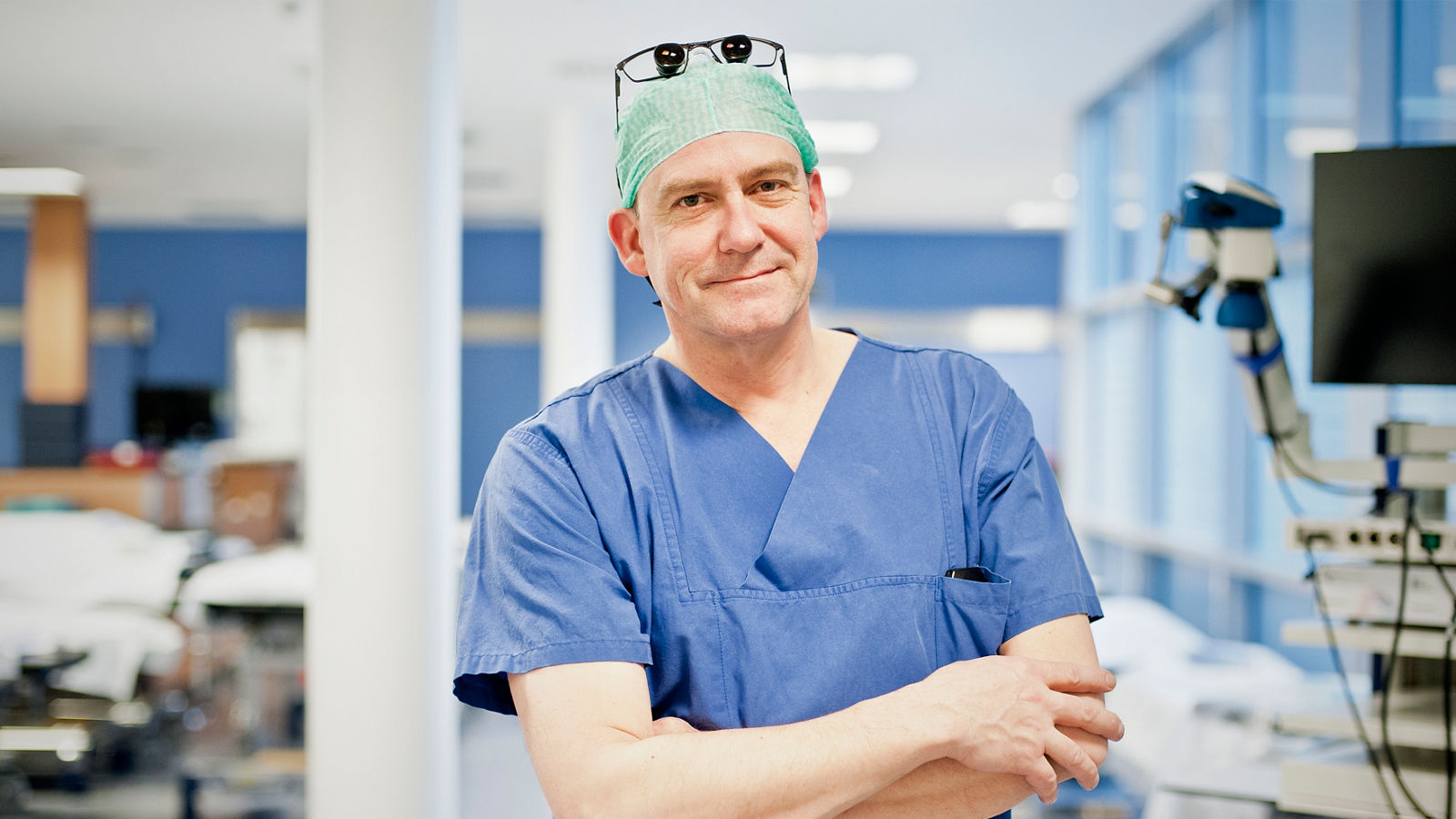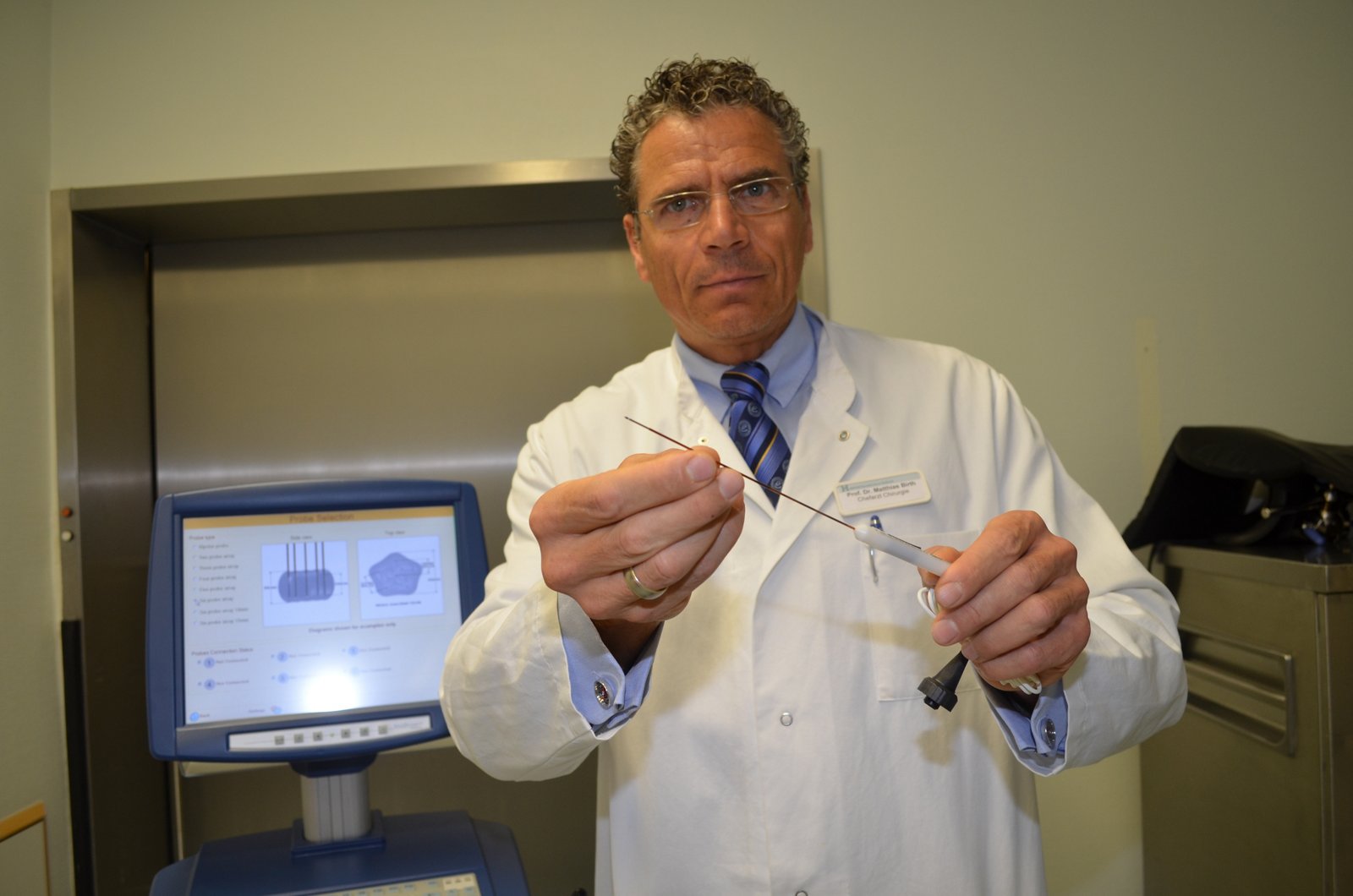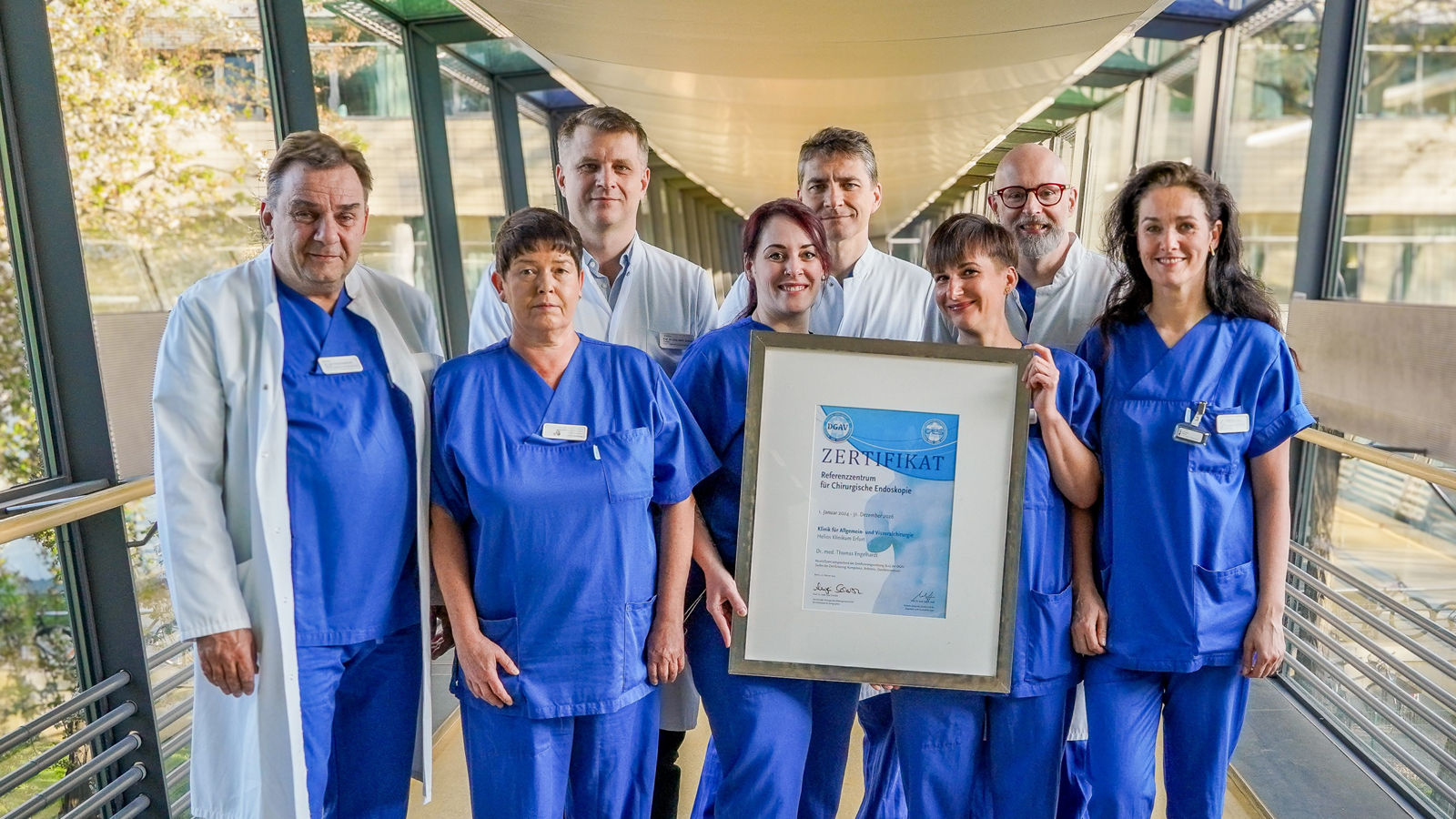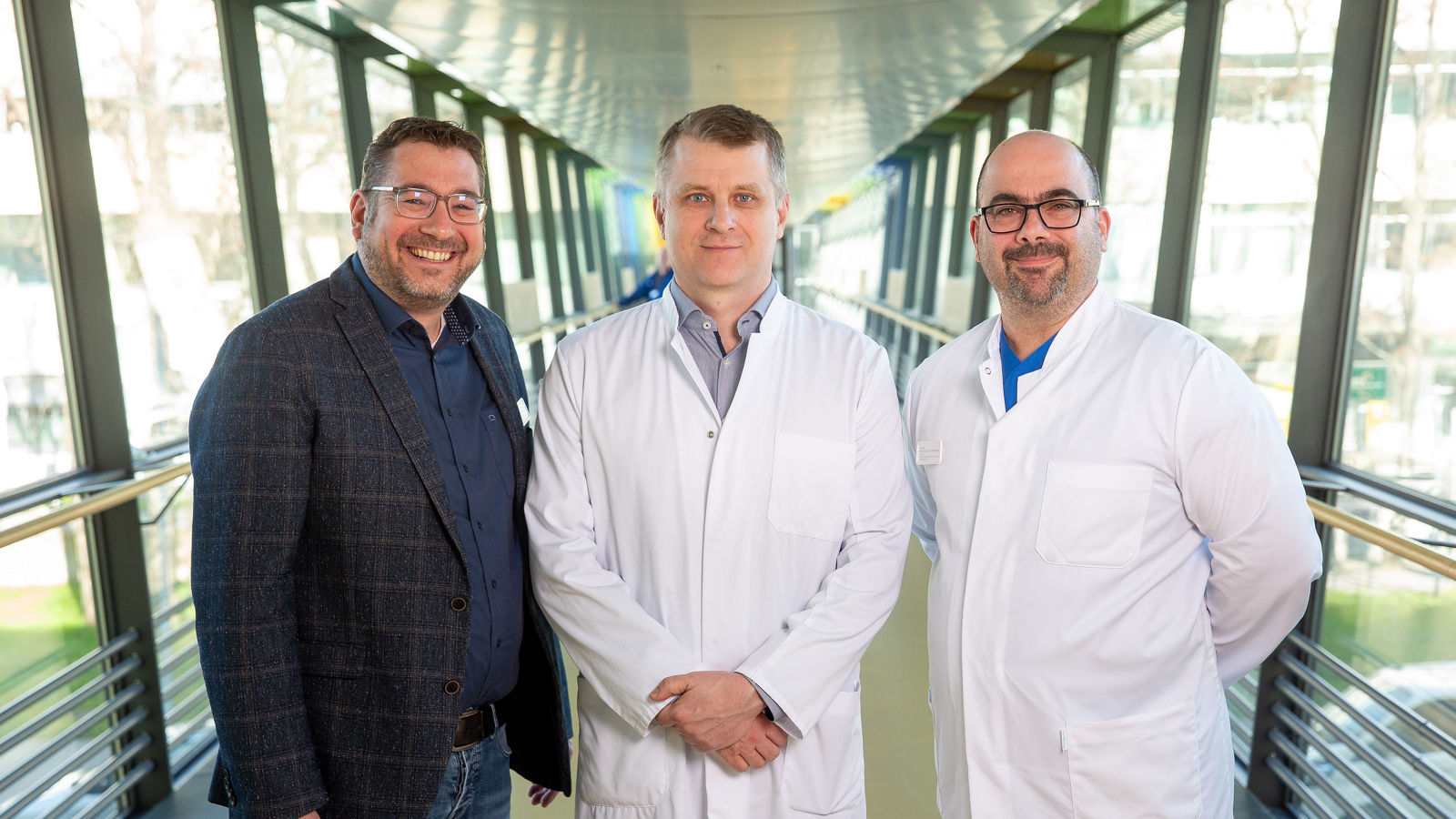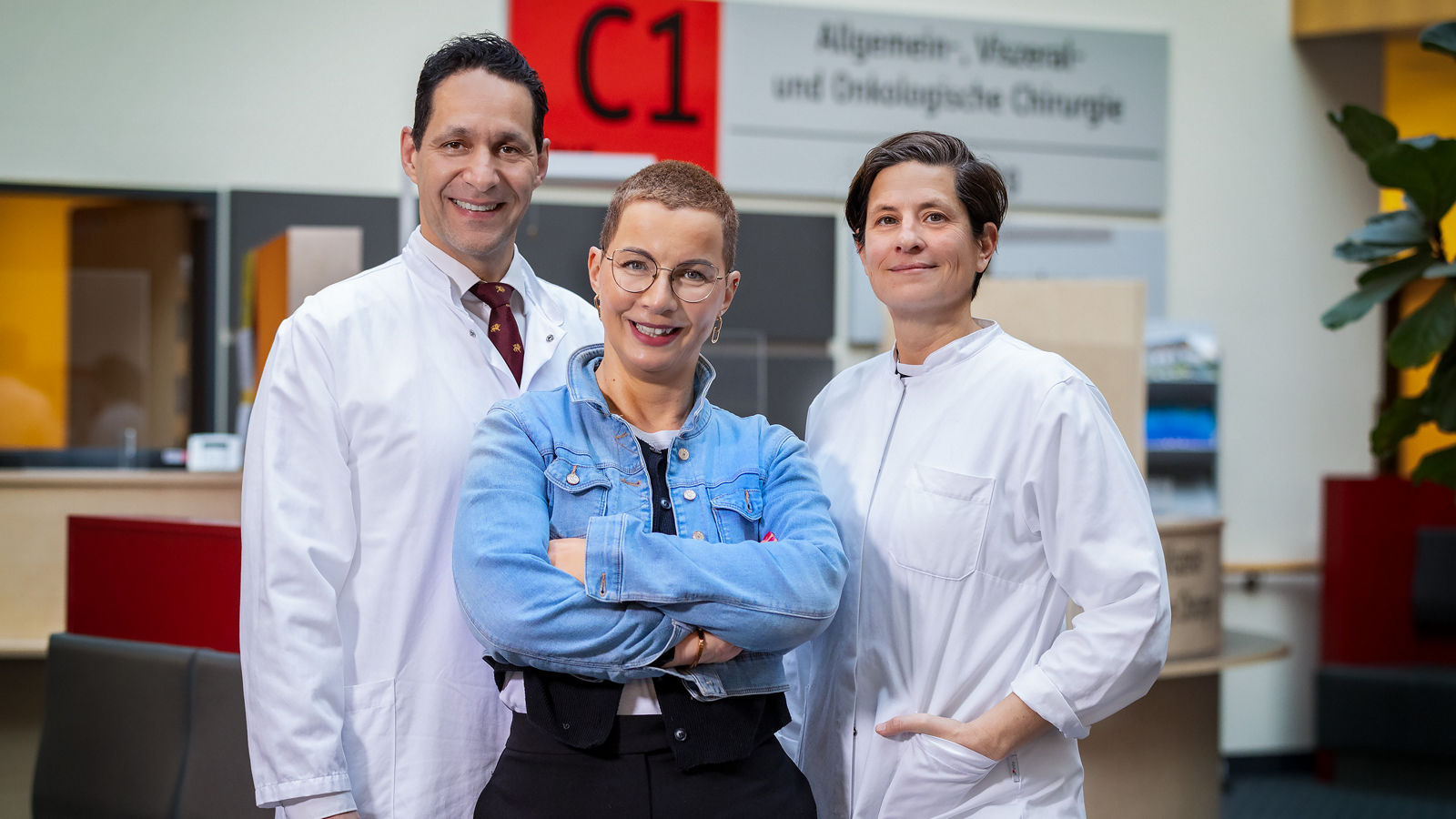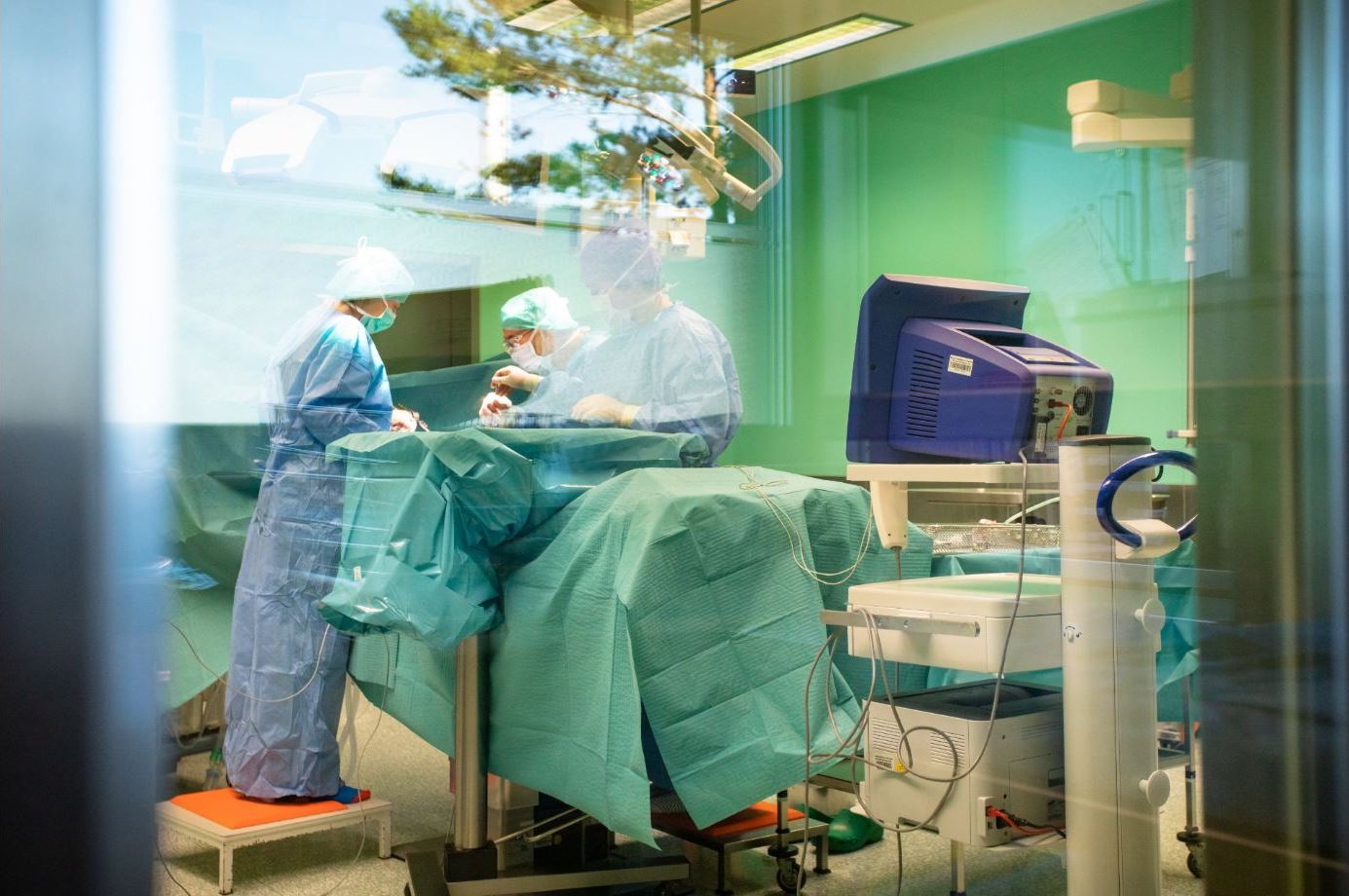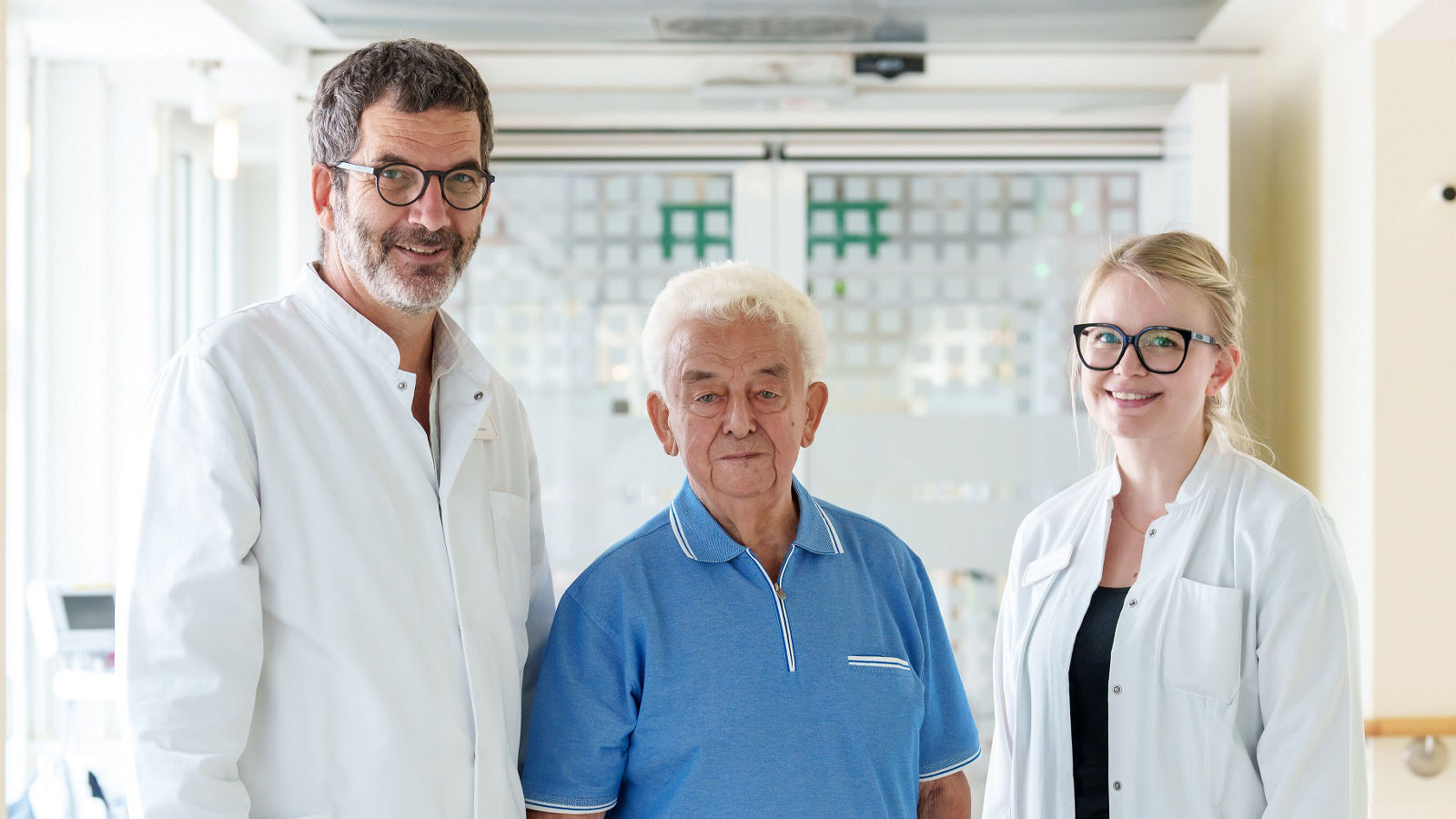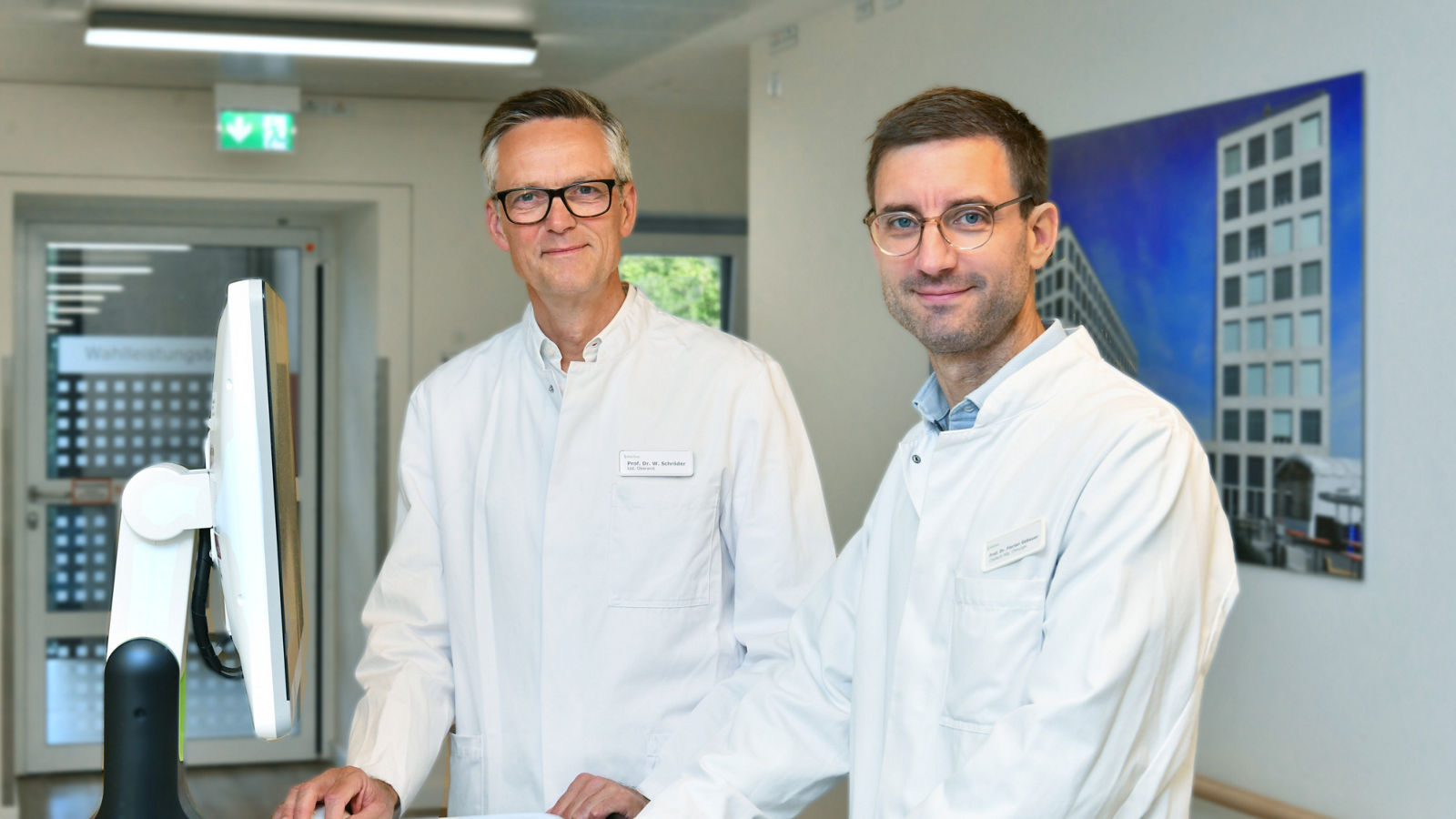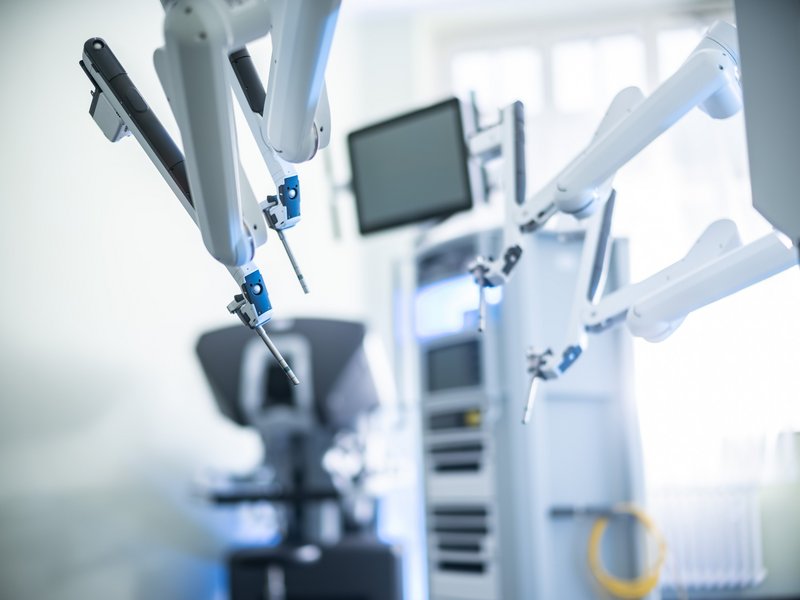
Successful Interventions with DaVinci Robots
About the DaVinci robot
The DaVinci surgical robot has been supporting our specialists since 2020. The high-quality DaVinci is especially suitable for use in general and visceral surgery and opens up completely new possibilities for the treatment of patients. During the operation, the surgeon sits at the control panel and moves the individual manipulators of the robot with maximum precision. All commands come from the surgeon - the surgical robot itself does not perform any independent movements. DaVinci® is especially useful for very thin surgical incisions such as prostate surgery.
What are the advantages of the DaVinci robot?
- Three-dimensional image of the surgical field
- Strong magnification with better detail recognition by the surgeon
- Instruments mimic the surgeon's wrist and provide unparalleled mobility.
- Increased precision and finest movements
- Oscillation compensation
- Fluorescence imaging to monitor tissue perfusion
What are the benefits of the DaVinci robot for the patient?
- Minor blood loss during surgery
- Better wound healing and good cosmetic results due to minimal incisions
- Fast painless recovery
- Significantly shorter hospital stay
DaVinci robot has assisted visceral surgeons and urologists in more than 100 interventions at St. Johannes Helios Hospital in Duisburg. The result for the patients is unambiguously positive. Currently, the next departments, such as gynaecology and thoracic surgery, are being trained to operate the panel.
In the middle of fuss, a large robot with four long manipulators is patiently waiting in the corner of the operating room No.5. The cables are sorted, the instruments are unpacked, the patient is ready. Intestine intervention is pending. The foci of severe inflammation should be removed. Basically, it sounds simple, but that is so. The surgeons should remove the involved tissues up to the last millimetre, leaving the healthy areas and blood vessels intact. And this region has a lot of them. Work will be taken upon by the robot, which is immobile as of yet. For sure, not on his own, as it will be operated by Dr. Norbert Hennes, Chief Medical Officer of the General and Visceral Surgery Department, using a panel in another corner of the operating room. The team is carefully preparing for assembling devices and instruments, the procedures are interdependent resembling a clock mechanism. But still there is feeling, that this intervention will be particular. "That is so, despite we have used DaVinci for so many times," Norbert Hennes confirms, disinfecting the patient's abdomen. The robot immediately takes the necessary position, its manipulators are brought to the abdomen wall, it is ready to operate. There are verified patterns for each type of intervention being intestinal, hepatic or other, which are used to set the instruments. But the technical assistant is patiently waiting.
The experts in general, visceral and minimally invasive surgery and urologists have performed robot-assisted interventions for more than a hundred times. These are predominantly visceral tumours: hepatic, gastric, pancreatic, renal and bladder tumours. DaVinci robot is universal and can be used in various fields of minimally-invasive surgery and endosurgery. The advantages become obvious in about a year: interventions are even more gentle and safe for the patients, as the robot has no tremor and is very precise. As with previous laparoscopic interventions, traditional scalpel is not used, cuts are rather made by electricity, so the vessels are separated and obliterated in a single passage, substantially reducing blood loss. In particular, oncology patients, who are already very weak, benefit from the cuts with pinpoint precision. High precision means smaller wound site, lower inflammation risk, less stress and more rapid recovery.
It also allows surgeons to obtain improved three-dimensional abdominal images and eliminates the necessity to stand near the operating table for a long time. But operating Da Vinci robot involves not only hands, but also feet of a surgeon, as he controls electric power supply to the instruments using special pedals on the panel. Norbert Hennes even takes his shoes off for this purpose, "I simply feel the pedals better in socks". First it was weird not to be directly near a patient, but to sit in distance near the panel, but you get used to it very soon. "Basically, there is a computer between me and a patients, which additionally optimizes movements of my hand. Big finger motions turn into minimal, which is particularly important for vessel and nerve interventions". Due to good results achieved during the year in use, the robot will be made available to other departments in future, thoracic surgeons and gynaecologists are undergoing intensive training right now. In the nearest future, Helios Hospitals will provide robot-assisted lung and uterus interventions. In future, more patients of Duisburg will take advantage of a robot.
Meanwhile, a surgical intervention has begun in the operating room No. 5 at St. Johannes Helios Hospital. Norbert Hennes is sitting behind the panel being very concentrated, and DaVinci manipulators are moving in the patients abdomen and outside it in parallel to surgeon's hands as if by magic. For better view, the bright lights in the operating room are off, only the monitors and single light spots on DaVinci manipulators are shining. For outsiders, it is an impressive and strange scene. The accompanying doctor is sitting directly near the patient, and the surgeon assistants and the anaesthesia care provider are on their usual locations near the operating table. Each movement in the patient's body can be followed on the monitors, with magnification like under a microscope. The instruments are operating quickly and precisely in the selected areas, there is almost no blood. After almost on hour, the surgical intervention has been successfully competed, the surgeon is satisfied: " We managed to effectively remove even the most insignificant pathological lesions, and I hope that the patient will recover quickly".

